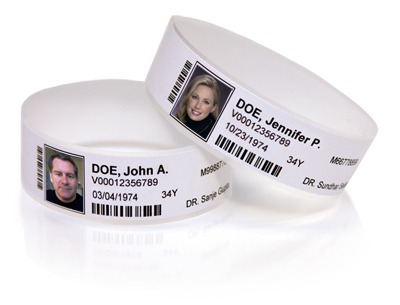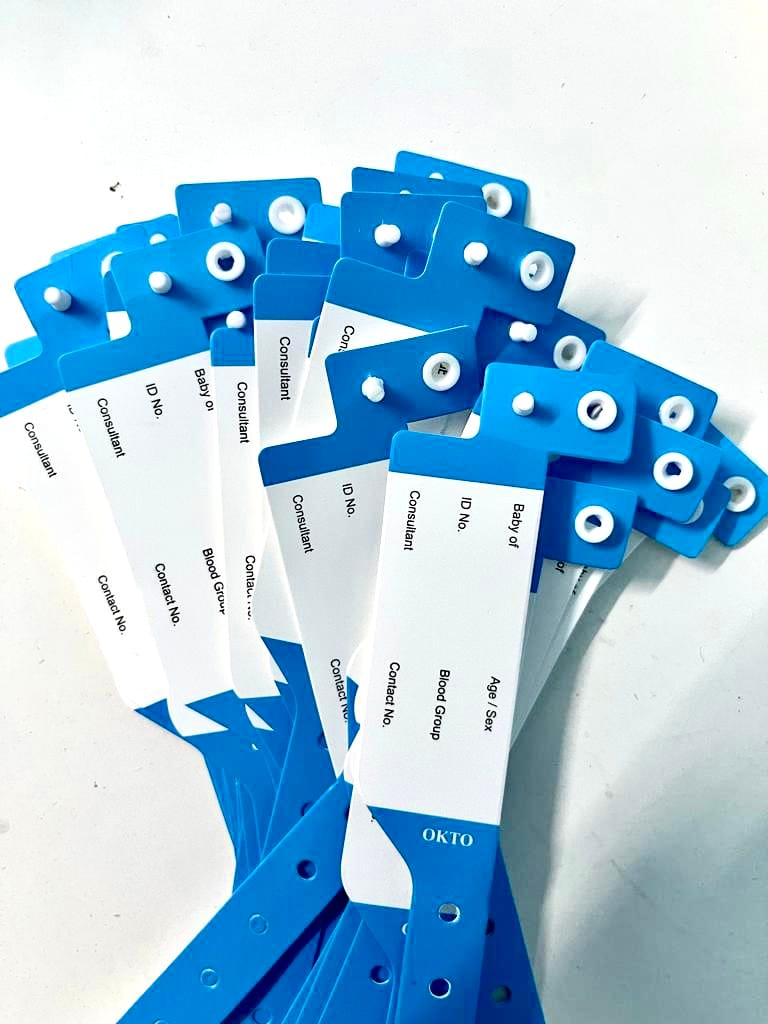Enhancing Safety And Security: The Significance of Person Identification Bands in Health Care
In the world of health care, the effectiveness of person recognition bands can not be overstated, as they serve as a fundamental safeguard versus misidentification and succeeding errors. As we explore the multifaceted duty of these bands, it comes to be obvious that their value prolongs beyond mere recognition, elevating concerns about best techniques and future advancements in individual safety.
Overview of Person Recognition Bands
Client identification bands play an essential role in ensuring the safety and security and precision of individual care in medical care settings. These bands, usually worn on the wrist or ankle joint, act as an important device for verifying individual identification, thus minimizing the threat of errors in treatment, medication administration, and other health care procedures. Made from sturdy materials, person identification bands often consist of essential details such as the client's name, day of birth, medical document number, and barcodes or QR codes for scanning.
The implementation of individual recognition bands is important in numerous healthcare settings, including health centers, outpatient facilities, and lasting treatment organizations. They add to a systematic technique in person management, allowing medical care professionals to swiftly and properly identify clients, specifically in high-pressure situations where swift decision-making is necessary.
Moreover, using these bands is aligned with regulative requirements aimed at improving individual security - Patient Identification Band. By making certain that each person's details is conveniently proven and easily easily accessible, doctor can keep a high criterion of treatment, decrease the incidence of unfavorable events, and cultivate a society of security within health care organizations
Benefits of Accurate Identification
Exact recognition is essential to enhancing patient safety and security and care high quality in health care settings. It functions as the very first line of defense versus mistakes that might lead to adverse person results. By guaranteeing that each patient is appropriately determined through trusted methods, such as client identification bands, doctor can considerably minimize the threat of misidentification, which can result in inappropriate therapies, medication mistakes, and also surgical mix-ups.
Moreover, exact client identification promotes efficient interaction amongst healthcare groups. When all team member can regularly identify people, they can share important information a lot more efficiently, causing better sychronisation of treatment. This is particularly vital in emergency circumstances where prompt interventions are vital.
Additionally, precise recognition supports compliance with governing criteria, thus lowering the risk of lawful consequences for health care centers. It fosters count on in between people and healthcare carriers, as patients feel a lot more safe and secure knowing that their identities are being secured.

Typical Challenges Dealt With
Guaranteeing reliable individual identification in medical care settings offers a variety of obstacles that can jeopardize safety and security and care high quality. One substantial difficulty is the irregularity in individual populations. Individuals might show up in a state of complication or distress, making precise recognition challenging. Furthermore, language barriers can impede effective communication, complicating the verification procedure.
Another difficulty is the dependence on human consider identification procedures. Health care specialists might inadvertently ignore or misunderstand identification procedures, especially in high-stress atmospheres such as emergency situation divisions. This can bring about errors, including the administration of incorrect treatments or medicines.
Technological problems likewise position difficulties. Although digital wellness document (EHR) systems are made to simplify patient identification, system outages or user errors can disrupt the procedure. Furthermore, the physical style of person ID bands can lead to readability issues, especially in cases where bands are harmed or covered.
Lastly, irregular training among staff regarding recognition procedures can result in gaps in expertise and method. Dealing with these challenges is crucial for boosting individual security and ensuring that identification bands offer their intended objective successfully.
Best Practices for Execution
To successfully implement person identification bands in healthcare setups, organizations need to adopt a complex method that focuses on innovation, training, more helpful hints and standardization assimilation. Standardization includes developing clear procedures for the layout, application, and use of recognition bands across all divisions. This guarantees uniformity and minimizes the danger of mistakes linked to variations in band kinds or labeling techniques.


Training is essential for all medical care personnel to ensure they comprehend the significance of exact client recognition, exactly how to properly check out and apply recognition bands, and the treatments to follow in situation of discrepancies. Routine workshops and correspondence course can reinforce this understanding and advertise a culture of safety and security.
Technology combination plays a pivotal function in boosting the effectiveness of individual identification bands. Using barcode scanning or RFID modern technology can streamline the recognition procedure, permitting real-time verification of person identities. Furthermore, digital health record systems must be set up to include notifies for inequalities in between the recognition band and patient data.
Future Trends in Individual Safety And Security
As healthcare continues to progress, the focus on patient safety is likely to intensify, driven by developments in innovation and a better understanding of systemic threats. Emerging patterns suggest a change in the direction of even more incorporated systems that utilize information analytics, artificial intelligence, and artificial intelligence to improve individual recognition procedures. These modern technologies can aid recognize possible safety issues before they escalate, thereby decreasing errors related to misidentification.
Additionally, the application of blockchain innovation may change how patient data is securely shared among doctor, making sure that recognition bands are up-to-date and consistently exact. This will certainly not only enhance patient safety and security yet also facilitate smooth interaction across multidisciplinary teams.

In addition, the growing emphasis on tailored medication is expected to influence client security procedures. By integrating hereditary and group details right into recognition systems, healthcare professionals can tailor treatments more efficiently, reducing the dangers of unfavorable reactions because of misidentification.
Final Thought
In final thought, client identification bands serve as an important element in enhancing safety within healthcare environments. By facilitating exact person recognition, these bands dramatically lower the danger of errors associated with misidentification, inappropriate treatments, and drug management. In spite of challenges in implementation, adherence to ideal techniques and the combination of emerging technologies can better enhance their efficiency. Ultimately, the ongoing emphasis on robust recognition procedures will add to enhanced patient end results and general safety in medical care settings.
In the realm of health care, the efficacy of individual identification bands can not be overstated, as Resources they offer as an essential guard against misidentification and succeeding errors.Individual recognition bands play an important duty in guaranteeing the safety and security and accuracy of individual treatment in healthcare setups. Made from durable materials, individual identification bands typically consist of important info such as the person's name, date of birth, medical document number, and barcodes or QR codes for scanning.
By ensuring that each client is properly recognized through reputable methods, such as patient identification bands, health care carriers can significantly reduce the threat of misidentification, which can lead to unacceptable treatments, medication errors, and even surgical mix-ups.
In final thought, person recognition bands serve as a vital component site in improving security within health care settings. Patient Identification Band.